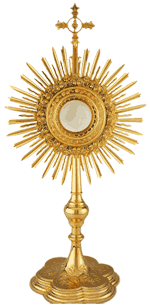Next Saturday at 3:00pm, there will be the annual St. Henry Feast Day Mass, followed by music, food, drinks and fun at the Annual St. Henry Reunion. If you went to St. Henry’s School, attended Mass at St. Henry, are named Henry, been to Henry’s bar, or have ever met anyone named Henry, you are invited!
St. Henry (6 May 973 – 13 July 1024) was the fifth and last Holy Roman Emperor of the Ottonian dynasty, from his coronation in Rome in 1014 until his death a decade later. He was crowned King of Germany in 1002 and King of Italy in 1004. He is the only German king to have been canonized.
Henry was the son of Henry, Duke of Bavaria. As his father was in rebellion against two previous emperors, he was often in exile. This led the younger Henry to turn to the Church at an early age, first finding refuge with the Bishop of Freising, and later being educated at the cathedral school of Hildesheim. He succeeded his father as Duke of Bavaria in 995 as Henry IV. Henry’s most significant contributions as emperor came in the realm of church-state relations and ecclesiastic administration within the Empire. He supported the bishops against the monastic clergy and aided them in establishing their temporal rule over broad territories. He strongly enforced clerical celibacy in order that the public land and offices he granted the church would not be passed on to heirs. This ensured that the bishops remained loyal to him, from whom they received their power, and provided a powerful bulwark against rebellious nobles and ambitious family members. Henry founded the Diocese of Bamberg, which quickly became a center of scholarship and art.
Henry had been working with the pope to call a Church Council to confirm his new system of politico-ecclesiastical control when he died suddenly in 1024, leaving this work unfinished. Henry was canonized in July, 1147 by Pope Clement II; and his wife, Cunigunde, was canonized in the year 1200, by Pope Innocent III. His relics were carried on campaigns against heretics in the 1160s. He is buried in Bamberg Cathedral. Because as king he supported the Church, Henry is usually portrayed wearing a crown and holding a small model of a church.




